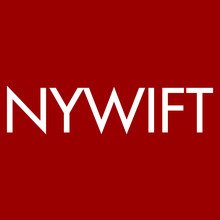Industry Jobs | VFX Supervisor
/As one of the premier studio production companies in New York, Broadway Stages works to meet the growing needs of the film and TV industry while also focusing on the needs of our community. We provide the industry with a soundstage or location where they shoot their scenes, but they also need a skilled and experienced workforce. In this series, we look at the various jobs that make a production come to life. We hope it provides insight and encourages you to consider a career in the film and TV industry. This week, we look at the role of visual effects (VFX) supervisor.
What is a VFX Supervisor?
Our last post in this series looked at the role of the special effects coordinator and how they and their team create practical effects or (SFX) that are the physical effects created during filming, such as explosions, fire, rain, monsters, etc. In this post, we look at the area of visual effects (known as digital effects or VFX). These are computer-generated effects that create elements that don’t exist, or cannot be easily depicted, in real life. Although these effects are added during post- production, they require planning and involvement during the pre-production and filming stages. The role that oversees these activities and the visual effects team is the VFX supervisor.
What does a VFX Supervisor do?
As the lead, the VFX supervisor works with others involved in the production, such as the director, producer, director of photography, first assistant director (or first AD), production designer, post-production supervisor, and VFX artists. As with the special effects coordinator, the VFX supervisor plays a key role in the planning and oversight of the effects added by their team, and also manages budgets and hires a team. They need to be involved in the pre-production stage to determine what visual effects will be needed for the film. In this Backstage piece, VFX supervisor Rob Legato (“Apollo 13,” “Titanic,” “The Jungle Book”) shares his experience and tips and notes how the VFX supervisor plays a key role in finding digital solutions when “something is too expensive, too dangerous, or too time-consuming to do.”
It is also important for the VFX supervisor to be involved during production to ensure scenes are filmed in such a way that the digital effects can be added in post- production. For example, in this Careers in Film interview, Kevin VanHook (“I, Robot, “ “Rizzoli & Isles”) describes how he prevents potential post-production issues, such as when lighting bounces off a green screen in such a way that it would cause difficulties for the visual effects artists. That leads us to the post- production stage, where the supervisor oversees the visual effects artists who add the digital effects “using computer imaging, motion capture technology, and animation” according to this Backstage overview of the supervisor’s role and responsibilities.
How do I become a VFX Supervisor?
As with other industry lead roles, there isn’t a specific degree required to be a VFX supervisor, however, studies in film production, computer graphics, or related areas are helpful. This role requires many years of experience, and there are various ways to establish a career path, such as starting out working as a roto artist or animator, gaining experience and working up within the field to supervisory positions. It is important to network to establish contacts in the industry and to have a reel showing examples of your work.
Key skills for this lead role include artistic skills, such as a knowledge of design, color, animation, and cinematography, as well as a knowledge of visual effects software and the ability to continually learn new technology and tools. Since this is a supervisory role, it is important to be a good communicator and collaborator as you work with others, and to have planning and organizational skills. Learn more about what it is like to be a VFX supervisor and the experience and skills needed at Careers in Film, Backstage (here and here), and ScreenSkills.
More information
Read about the visual effects used in two productions filmed at Broadway Stages in this Hollywood Insider interview with VFX supervisors from “The Flight Attendant” and this Autodesk interview with the VFX supervisor from ”Luke Cage.” Learn about the history of visual effects in this Hollywood Insider article, and see this StudioBinder article that provides more detail about what VFX is and describes three main types of effects: CGI, compositing, and motion capture, providing video examples. And, as always, you can learn about film and TV industry jobs, training, and more in the Broadway Stages’ Industry Resource Guide. Our guide provides information about industry-focused job posting sites; links to general recruiting sites; education and training programs; and state, city, and borough industry information.




